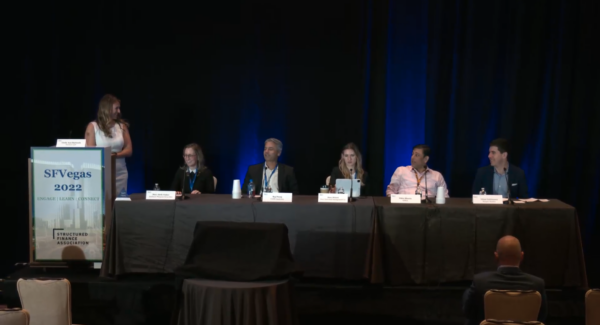Filling Gaps in the Real Estate Market with Structured, Objective Property Data | CAPE at SFVegas 2022

CAPE Analytics recently attended Structured Finance Association’s SFVegas 2022 where we took the opportunity to listen and engage with the issues that are currently facing the real estate market. In our conversations with market participants, we had impactful discussions about the dynamic mortgage environment, where rising rates, rising home prices, and increasing weather perils are causing major market players to turn to modern technology solutions to solve increasingly complex problems.
With economic uncertainty and volatility facing the current market, we talked about how AIRE, CAPE’s AI-powered platform for real estate, can tackle these issues head-on by adding clarity to the risks embedded in the collateral underlying real estate transactions.
Raj Dosaj, Head of Real Estate at CAPE, participated in the Market Beat: Single-Family Rental Market panel and spoke about how modern technologies like computer vision are mitigating issues with traditional appraisals and transforming the bidding, due diligence, and portfolio monitoring processes.
Below are some key moments and discussions from the panel…
Key Moments from the Panel

What are the gaps in legacy single-family rental (SFR) data sources, and how does data derived from computer vision fill them?
Dosaj: All of us have relied on appraisers or BPO collection and real estate agents driving out to a property. You catch a ton of problems in these reports, and they always are on the worst properties. But they don’t do a very good job of catching outlier risk. With computer vision and aerial imagery, we can take that and convert it into structured data to deliver an automated property condition report on 85% of the houses in the country.
A BPO or a drive-by—that’s not objective data. With computer vision and geospatial data, where you have an actual distance measurement and a scoring mechanism done by a neural network, you now have objective data points that feed into models. They feed into a home price model, a rental model, or rental projection models, and you can build models that score the properties and how they will perform on an open market.
On the acquisition side, CAPE can tell you about the features of a house: is there a pool you didn’t know about? Is there an above-ground pool? That’s never in the other data. We fill in the holes that are missing in the standard sets of data that people use—holes that have tried to be filled by human collection and aren’t very good.
What does AI-powered data bring to the SFR space?
Dosaj: For an owner/operator it means if you have a portfolio of 10,000, 20,000, or 50,000 you can screen your entire portfolio for where you may need to do something like roof rehab. You can do that on a seasonal basis and rotate certain houses out of the portfolio.
On the acquisition side, when you look at MLS data and have to make fairly fast and automated decisions, CAPE data feeds into both your asset purchase price model and rental model.
CAPE AIRE—AI-Powered Property Intelligence for Real Estate
CAPE AIRE, an AI-powered intelligence platform for the real estate market, uses computer vision, aerial imagery, and novel data sources to extract highly accurate, critical information about property conditions and their surroundings, with a focus on characteristics that influence property value and marketability.
Through its unique insights, including state-of-the-art computer vision and geospatial data, AIRE provides more accurate property valuations, helps improve decisions around bids, buys, and capital expenditure needs for loan tapes and property portfolios, and increases efficiency by avoiding time-consuming research.
Read more about how CAPE AIRE is bringing instant & accurate property condition data to the real estate market.

